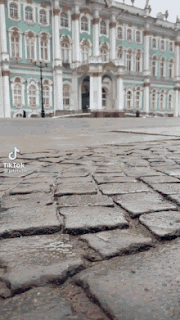NO SOUND
A silent film is a film with no synchronized recorded sound, especially with no spoken dialogue. The silent film era lasted from 1894 to 1929. In silent films for entertainment, the dialogue is transmitted through muted gestures, mime and title cards which contain a written indication of the plot or key dialogue. The idea of combining motion pictures with recorded sound is nearly as old as film itself, but because of the technical challenges involved, synchronized dialogue was only made practical in the late 1920s with the perfection of the Audion amplifier tube and the introduction of the Vitaphone system. During silent films, a pianist, theatre organist, or in large cities, even a small orchestra would often play music to accompany the films. Pianists and organists would either play from sheet music or improvise; an orchestra would play from sheet music.
I am a Dutch amateurfilmer and homevideo-enthusiast, as well as producer, director, editor of "C'est le Toon". This video-blog is a communication-tool sharing news, documentaries, family videos, interviews, travelogues, visual arts and filmmaking. It also contains tips about and examples of how-to make interesting homevideos, travelogues, ipodsfilms vacationfilms and vodcasts etc. Search the site for worldwide video's and movies! Enjoy.
28 september 2008
Circus Elleboog
25 september 2008
Cafe-billiard
It is mind-blowing to think how far we’ve come since the introduction of motion films and television in the early 1900s. The Internet has revolutionized video technology and the web video industry shows no signs of slowing down. With sites like YouTube and online streaming rapidly replacing television and traditional video formats, we now have access to billions of hours of digital video content readily available at our fingertips thanks to the Internet and modern mobile devices.
20 september 2008
Russian orthodox church
Modern usage
In July 1970, management of the Church passed to Saint Isaac's Cathedral and it was used as a museum. The proceeds from the Cathedral funded the restoration of the Church. It was reopened in August 1997, after 27 years of restoration, but has not been reconsecrated and does not function as a full-time place of worship. The Church of the Saviour on Blood is a Museum of Mosaics. In the pre-Revolution period it was not used as a public place of worship. The church was dedicated to the memory of the assassinated tsar and only panikhidas (memorial services) took place. The Church is now one of the main tourist attractions in St. Petersburg.
18 september 2008
Cows and cows
World cinema is a term used primarily in English language speaking countries to refer to the films and film industries of non-English speaking countries. It is therefore often used interchangeably with the term foreign film. However, both world cinema and foreign film could be taken to refer to the films of all countries other than one's own, regardless of native language.
07 september 2008
Blaye citadel
Fortifications of Vauban
Fortifications of Vauban consists of 12 groups of fortified buildings and sites along the western, northern and eastern borders of France. They represent the finest examples of the work of Sébastien Le Prestre de Vauban (1633-1707), a military engineer of King Louis XIV. The serial property includes towns built from scratch by Vauban, citadels, urban bastion walls and bastion towers. There are also mountain forts, sea forts, a mountain battery and two mountain communication structures. This property is inscribed as bearing witness to the peak of classic fortifications, typical of western military architecture. Vauban also played a major role in the history of fortification in Europe and on other continents until the mid-19th century.
03 september 2008
Vichy in style
By the 19th century Vichy was a station à la mode, attended by many celebrities. But the stays of Napoleon III between 1861 and 1866 were to cause the most profound transformation of the city: dikes were built along the Allier river, 13 hectares (32 acres) of landscaped gardens replaced the old marshes, and along the newly laid out boulevards and streets, chalets and pavilions were built for the Emperor and his court. Recreational pursuits were not spared: in view of the park, a large casino was built by the architect Badger in 1865. The emperor would be the catalyst of the development of a small rail station which multiplied the number of inhabitants and visitors by ten in fifty years.
After the Second French Empire, the Belle Époque marked the second large construction campaign in Vichy. In 1903 the Opera House (l'Opéra), the Hall of Springs and a large bath designed in the eastern style were inaugurated. In 1900 the Parc des Sources was enclosed by a metal gallery which came from the World Fair of 1889. 700 metres (2,300 feet) long, it is decorated by a frise de chardons and was completed by the ironworker Emile Robert. Many private mansions with varied architectural styles were erected during the first half of the 20th century.
Vichy welcomed 40,000 curistes in 1900 and this figure had risen to nearly 100,000 just before the onset of the First World War. La vie thermale had its heyday in the 1930s. The success in treating ailments that was attributed to the Vichy Baths led la Compagnie Fermière to enlarge the Baths again by creating the Callou and Lardy Baths. The Art Nouveau-style Opéra, inaugurated in 1903, accommodated all the great names on the international scene. Vichy became the summertime music capital of France, but the war of 1914 would put a brutal end to this development.





